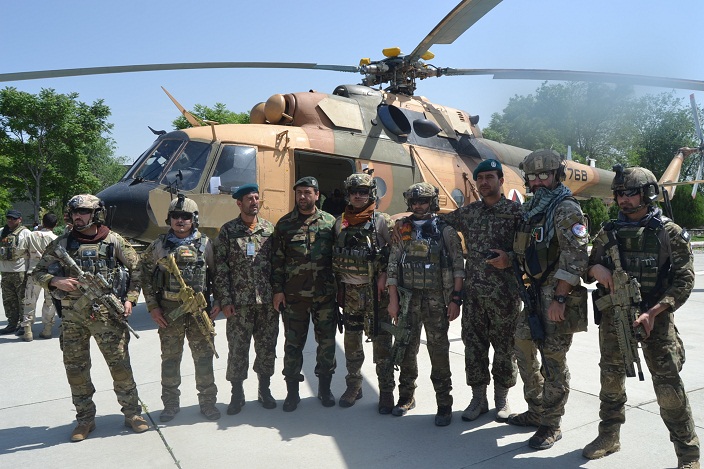Insurgents control only eight districts; clearance operations continue there: MoD
By Mansoor Faizy-KABUL: The Ministry of Defense (MoD) on Wednesday rejected a report released by the Special Inspector General for Afghanistan Reconstruction (SIGAR) that the government was controlling less than 60 percent of the territory.
As of November, the government could only claim to control on influence 57 percent of Afghanistan’s 407 districts, according to US estimates released by SIGAR, in a quarterly report to the US congress.
Spokesman for the Defense Ministry, Mohammad Radmanish denied the report, saying: “Without eight districts where the insurgents are present, all other districts are under the government control.” “Some of the districts are under threats that Afghan security forces always positively respond the threats.”
The US government-led watchdog showed that security forces had been struggling against insurgency but the government was losing control more territory.
“The government controlled of influenced only 57.2 percent of Afghanistan’s 407 districts as of mid-November, a 6.2-percent from August and a 15-point decrease since November 2015,” the report said.
But Radmanish claims that more than 85 percent of territory is controlled by the government.
“SIGAR’s analysis of the most recent data provided by US forces in Afghanistan suggests that the security situation in Afghanistan has not improved this quarter,” it added.
SIGAR’s report claims that the numbers of the Afghan security forces are decreasing, while both casualties and the number of districts under insurgent control or influence are increasing.
It also reported that 10 percent of districts are under control or influence of militants, while 33 percent are contested.
“SIGAR’s report is not accurate”, the spokesman said, rejecting the report’s claim that 10 percent of districts are under control or influence of militants.
“There is security threat, but not that much that we control only 57 percent of territory.”
“Insurgents in their spring offensive wanted to control 8 provinces and 60 districts, and for sure, there was possibility of casualties to prevent insurgents to reach their goal,” Radmanish argued.
“In 2015 and 2016, we received high casualties, because we had numerous independent operations against militants.”
According to SIGAR’s report, 6,785 Afghan security forces were killed between January 1 and November 12 last year, with another 11,777 wounded.
 Afghanistan Times
Afghanistan Times




